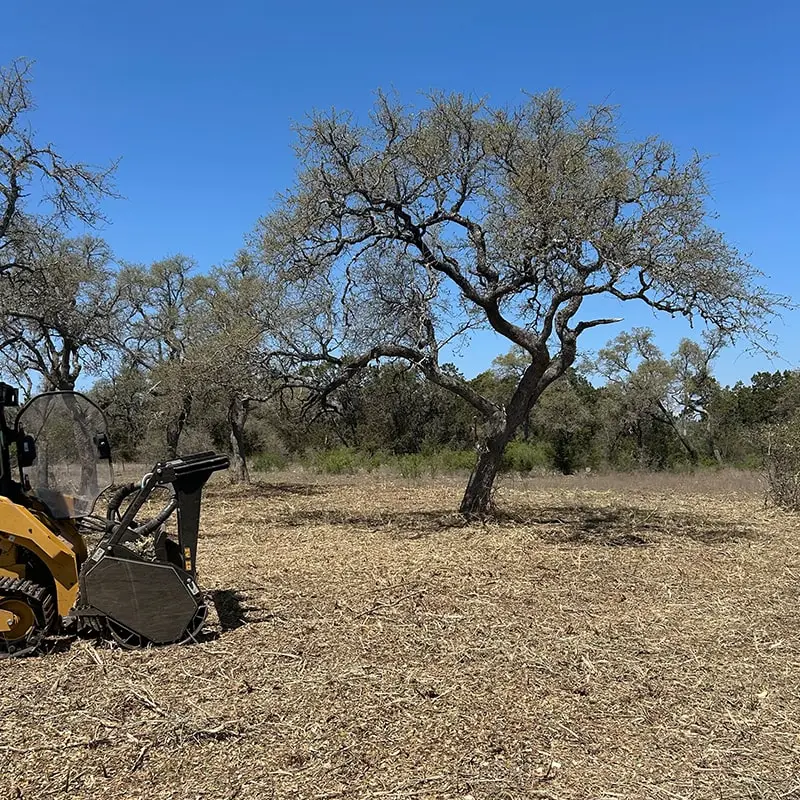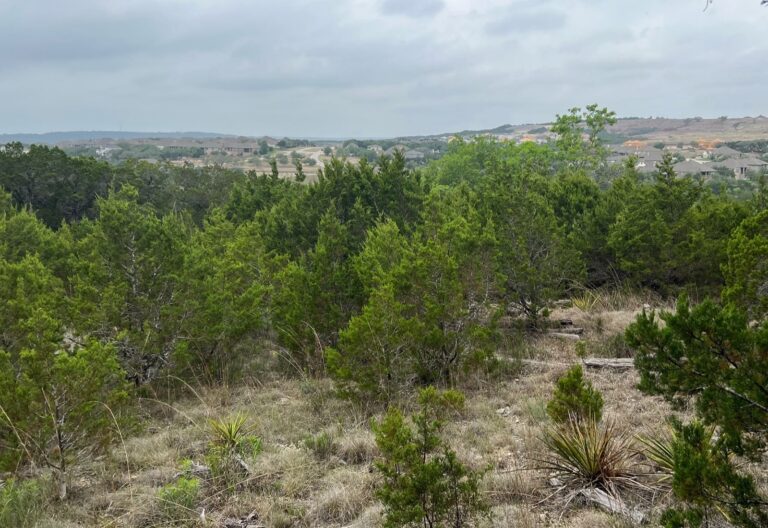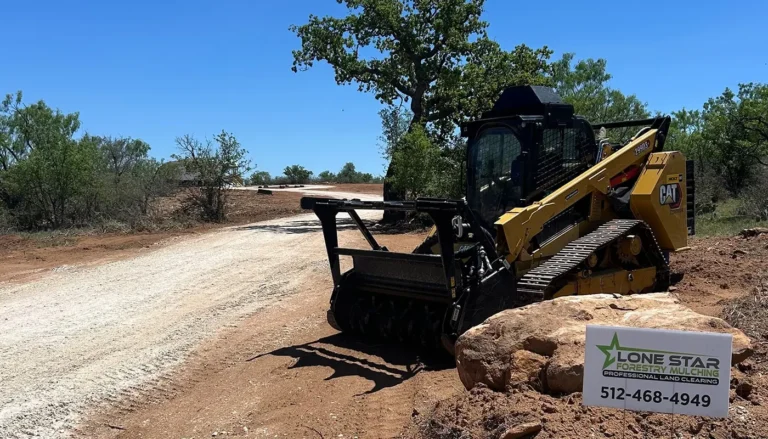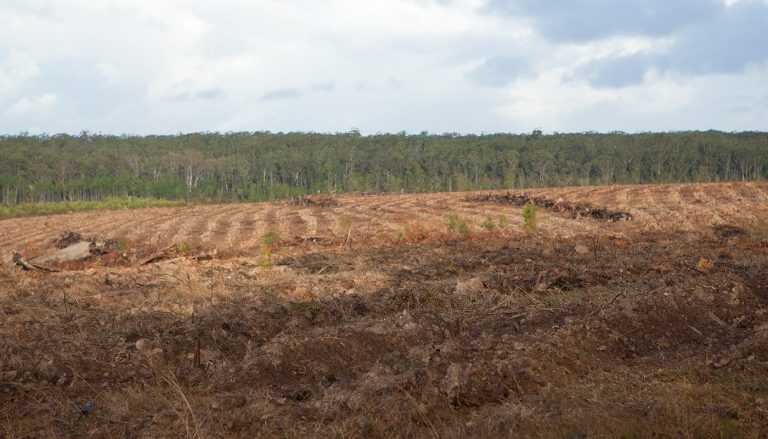When it comes to forestry mulching vs. land clearing, there is often some confusion about what each process includes. Land clearing refers to the process by which vegetation, such as trees and bushes, together with their roots, are permanently removed. The goal of land clearing is to clear areas of forest, overgrowth, or brush to use the lot for other purposes, such as pasture land, farming, housing development, or the construction of roads.
Forestry mulching also clears vegetation from plots of land for similar purposes, but instead of using multiple pieces of heavy equipment and a whole crew of workers, forestry mulching uses a single machine to cut, grind, and clear vegetation while it turns those saplings and brush into mulch on the spot.
But that’s not the only difference between the two. If you’re thinking about clearing your land but not sure which method you should use, here we will give you the rundown on the difference between forestry mulching vs. land clearing and when each method is best used.
Don’t pay for the overkill of traditional land clearing when forestry mulching can do it faster and at a lower cost. Call Lone Star today.
The concept of forestry mulching
Forestry mulching uses a single machine to cut, grind, and clear vegetation. A forestry mulching machine, also known as a forestry mulcher, brushcutter, or forest masticator, uses a rotary drum fitted with steel chipper tools or blades to shred vegetation. They are manufactured as application-specific tractors and mulching attachments (mulching heads) for existing tracked and rubber-tired forestry tractors, skid steers, or excavators.
Heavy-duty forestry mulchers can clear up to fifteen acres of vegetation each day, depending on the terrain, density, and type of material. Land clearing, right-of-way clearing, pipeline and power line maintenance, vegetation management, invasive species control, and wildlife restoration are common uses for forestry mulchers.
Forestry mulching vs. land clearing
Is forestry mulching a better land clearing method than traditional land clearing methods, which may use chemicals, heavy machinery, intense manual labor, and even explosive blasting? The mulching process reduces land clearing steps by processing trees and other vegetation where they are instead of cutting/felling/hauling and cleaning up the site. Furthermore, this reduces the need for multiple machines like bulldozers, excavators, wood chippers, grinders, and hauling equipment. Only one mulching machine is required, reducing labor and fuel costs, as well as air-polluting emissions.
By removing trees, uprooting roots, and disturbing soil, traditional land clearing methods often increase the risk of erosion. Mulching, on the other hand, leaves the soil structure intact. As the mulch decomposes, it will act as an erosion barrier while returning nutrients to the soil. The mulch will allow the grass to grow naturally and can be maintained through mowing. So when your lots is not heavily wooded with large trees that require those chainsaws, bulldozers, stump grinders and dump trucks that traditional manual land clearing uses, forestry mulching is usually the more budget and environmentally friendly option.

Popular applications of forestry mulching services
- Right-of-way clean up and maintenance: Forestry mulching is used for right-of-way clearing and maintenance of roads, highways, pipelines, and other utility lines. All young saplings, stumps, and other vegetation are entirely removed as part of this procedure.
- Land clearing: Forestry mulchers can be used for various land clearing projects, such as site preparation and development, clearing brush, creation of nature trails, and seismic exploration.
- Wetlands and riparian habitat conservation: Forestry mulching is increasingly popular among nonprofit riparian conservation organizations, government agencies, and private landowners to maintain habitats for pheasants, doves, elk, deer, and various other animals.
Ready to clean up your land?
So what is the verdict in forestry mulching vs. land clearing with traditional methods? The answer is…it depends. If you’ve got a full forest of mature trees on your hands and everything must go, the traditional route may be the only good option. However, for overgrown lots with thick vegetation, heavy brush, saplings, stumps, and other similar growth, forestry mulching is an economically attractive and environmentally friendly alternative to conventional land clearing practices.
It leaves the soil structure intact, helps retain moisture, and returns nutrients back into the soil. It also can leave the area looking better than it did before as it bring the wild growth back under control. Lone Star Forestry Mulching offers professional forestry mulching services from Georgetown to Austin, Texas. Contact your friendly neighbourhood forestry mulcher today!




